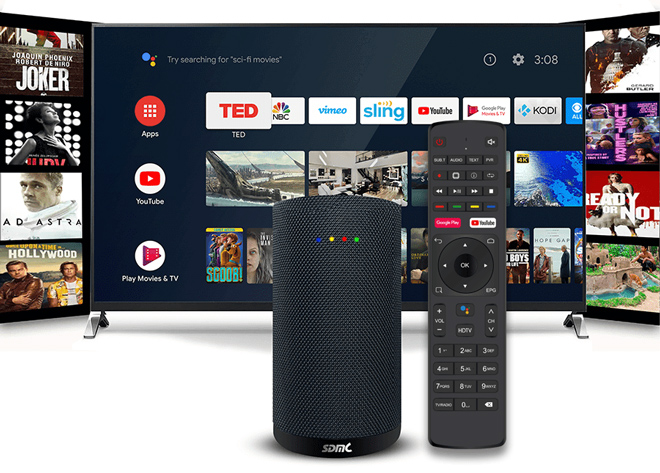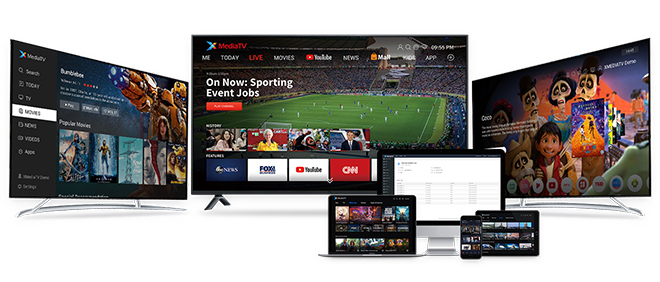The OTT industry has seen a lot of growth and evolution in just a few short years. However, we are still so close to the start.
Experts forecast even more growth in the industry in the coming years. The OTT industry is expected to be worth $1.039 trillion by 2027. This is a significant increase from $121.61 billion, which was the industry’s value in 2019. The growth will continue as more OTT streaming services enter the market and more viewers continue to “cut the cord” on cable.
5G internet has started to become standard, especially in urban areas. This next-generation cellular network technology will provide much faster, more reliable internet speeds. In tests, 5G is roughly 100 times faster than the best available 4G LTE networks.
As IHS Markit has noted, “video streaming will be 5G’s killer app.” Gains will be most noticeable for video streaming. “5G will also be a boon to live sports and event streaming,” IHS predicts. “When having low latency is critical, 5G’s gains will become most apparent.”
The success of OTT content publishers will reflect this trend. For example, 29% of consumers would pay a premium if 5G provided a better quality video on mobile devices and decreased buffering.
However, there are some limitations to consider with 5G. For example, walls and other barriers tend to interfere with 5G signals. Carriers plan to bypass this with extensive networks of smaller network access points. Users can fall back to 4G LTE signals when 5G doesn’t work. Nonetheless, this tech will change the entire industry.
Also related to the latest OTT trends, streaming 4K video takes up about 30 Mbps of internet bandwidth. For live video streaming, you should have at least double that bandwidth available. That’s not very common for consumer-grade internet connections. However, the rise of 5G will enable an explosion in streaming video quality by making 4K streaming solutions possible.
The extra video bandwidth will make it possible to stream 4K video. Expect 4K and VR (Virtual Reality) streaming to be defining features of the next 1-2 years. 360 live streaming will also become much more possible with these new network connections. Overall, the streaming experience will be getting much more immersive, very soon.
One game-changer in the immersive streaming world was the release of Facebook’s “Oculus.” Previously, virtual reality consoles were upwards of $2000. The Oculus models, however, start at $299. This makes it much more attainable for consumers to get their hands one of their own.
VR technology is currently most popular among consumers, it is slowly trickling into different industries. These trends are likely to grow as technology becomes more accessible.

The premium OTT market is undergoing some tectonic shifts. After many years without major competition, Netflix has finally started to take a hit.
Over the past year, media giants like Disney, HBO, and NBC have released Disney+, HBO Go, and Peacock Premium, respectively. Moreover, the Disney+ app was downloaded 3.2 million times in the first 24 hours it was available.
In addition, there is an OTT streaming service from Apple TV+ and forthcoming services from AT&T and Comcast. Other OTT trends include a big increase in streaming services for sports. These services are flooding the market with premium content, making it harder for new sports broadcasting services to compete with these established giants.
However, the exact way this new competition will play out depends on local market details. In India, for example, analysts predict that Disney+ will compete with Netflix, but not with Amazon Prime and other services aimed at broader mass markets.
As these services and OTT trends rise, they’re entering the mainstream in a way never seen before. In fact, OTT advertising is becoming more and more important in the online ads space, as well. Advertising revenues are seeing a steep increase as more and more people begin to use these services.
By some estimates, more than a third of professional broadcasters monetize their content via subscription models. However, this is having at least one adverse effect on the market for OTT pricing.
According to a global survey from Apester, 60.1% of people are sick of so many streaming services. More than a fifth don’t know much of anything about upcoming services, only 16.5% say it makes sense to have so many competing services. “We have fast come to the point of excessive options in the OTT space both globally and locally,” said Varun Duggirala, Content Chief & Co-founder of The Glitch.
This current reality is a kind of “subscription fatigue,” and it’s increasingly a problem. Watching subscription-based OTT video services is a daily habit for 60% of adults in the US. At the same time, many viewers have become tired of subscribing to multiple services.
However, this is driving increased innovation in terms of trends for OTT video monetization. Providers are increasingly turning towards pay-per-view and advertising monetization as alternatives to subscription monetization.
We may see increased usage of bundling different subscription packages together to create channels. We’re already seeing Disney+ bundle their videos together with ESPN, National Geographic, and other content producers. This will likely continue to become more popular in the future.
In March 2020, the OTT industry saw a rapid spike in consumption as people started staying home in the United States and Europe as per government-mandated lockdowns. Within weeks, this spike hit a plateau.
Disney+ was one service that made efforts to accommodate their subscribers by releasing movies on the platform early. One notable early release was Frozen II. The idea was that parents were starting to work from home and may not have their normal childcare, so the release of this and other children-friendly movies would buy parents some time.
There were several OTT streaming series, including a few Netflix Originals, that got an unprecedented amount of attention and viewership that they might not have attracted under normal circumstances.
One example is Tiger King, a controversial docuseries. This is simply one widespread sensation that likely would not have had as much success if people were not stuck at home. Other series with debuting casts found great success, as well.
Another interesting OTT trend to come of COVID-19 was the emergence of technology that allowed people to watch movies together on a video chat. These platforms allow users to stream in sync. The intention was to bring people together even when it was safer to be physically distant.
Connected TV, or “CTV” for short, refers to streaming on televisions via OTT technology. This has become more popular over the past year as viewers have begun watching more content on TVs as opposed to mobile devices. This is made possible through smart TVs, gaming consoles, and dedicated streaming devices.
Interestingly enough, the increase in CTV streaming has not caused a significant decrease in streaming on smartphones, tablets, and computers. For a few years, there was a general preference towards mobile streaming, so it will be interesting to see how this trend looks going forward.
Some popular technology for CTV streaming includes Amazon’s Firestick, Roku, Apple TV, Xbox, PlayStation, and the Nintendo Switch.
User experience (UX) has contributed greatly to the success of platforms. Viewers prefer using streaming services that have interfaces that are easy to navigate. They also want the best selection of content.
For example, Netflix, you will see that the Netflix platform is easy to navigate, pleasing to the eye, and the selection of content is quite expansive. Both platforms have released some phenomenal movies and series, but Netflix does so on a larger scale.

Another major OTT trend in 2022 is content fragmentation. Content fragmentation is a strategy that broadcasters and other content creators use to target niche audiences in hopes of maximizing their success. The idea is that if the content is carefully curated and strategically set up for delivery, it will have a better chance of landing with the intended viewers.
One prime example of this is Gaia, which is an OTT platform that is designed for streaming “Conscious Media.” This platform is geared towards viewers that value spirituality, enlightenment, meditation, and yoga.
Creators
who are catering towards a “mindful” audience would likely work to have
their content distributed via Gaia as opposed to other popular
streaming services, like Netflix or Hulu. On the other hand,
broadcasters or creators who produce raunchy comedies or sitcoms would
likely avoid services like Gaia since that audience wouldn’t fall into
their niche.

Streaming localization is another major trend that is designed to make online video content more accessible to viewers in different locations. This helps brands and creators expand their reach and connect with a larger audience.
Some methods of streaming localization include translated captions, multi-currency payment options, enhanced content delivery, China delivery, and more. Basically, the goal is to make the viewing process seamless and comfortable for viewers, no matter where they are located.
Many creators take streaming localization to the next level and create localized content for segments of their audience. For example, if a British company is trying to connect with an American audience, they might curate some of their content to make it more culturally relevant to Americans versus locals. This could be done by using American actors, creating scripts that use an American dialect, and so forth.
Content localization can tie into content fragmentation, which we discussed before.
When it comes to current OTT trends, the industry is finally getting close to a stage of maturation. We’re seeing the rise of some exciting new OTT technologies, along with the consolidation and smoothing out of others. We’re seeing the rise of formats like CMAF as well, which has the potential to shake things up further.
Additionally, the streaming technology industry is
also facing some new challenges. It’ll be interesting to see how 2022
plays out after unprecedented shifts over the past year.
Source: https://www.dacast.com/blog/4-ott-trends-to-watch-2020/
©2003-2025 SDMC Technology Co., Ltd